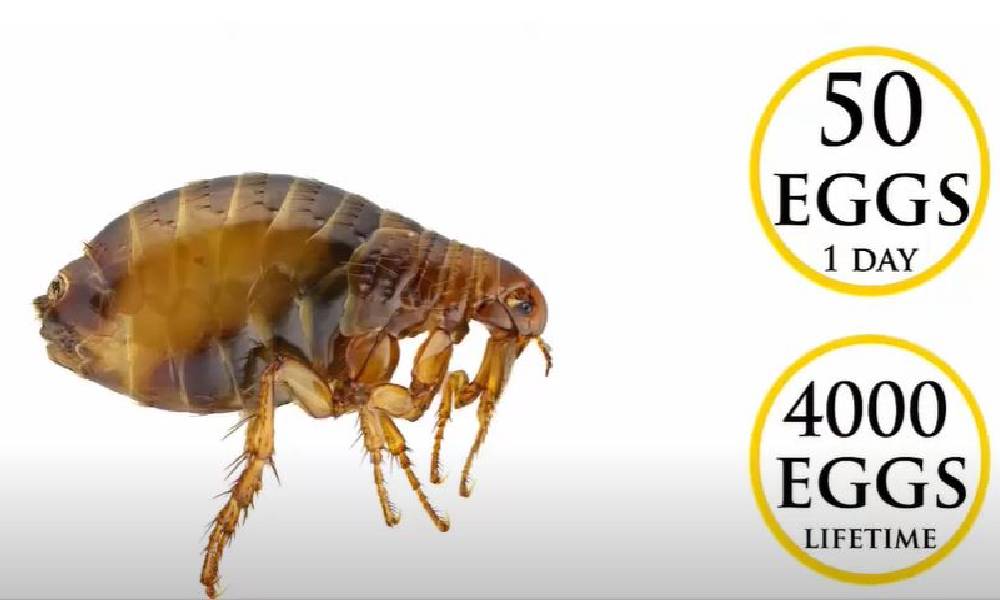
Here’s Everything You Need to Know About These Dangerous Parasites: Dog Fleas
Fleas caused the Bubonic Plague in the 14th century. Between 75 and 200 million people in Europe and Asia died due to the infectious disease.
The culprits of the Plague, also known as the Black Death, were fleas carried by rats. Up to now, these deadly external parasites called Oriental Rat Fleas are found almost everywhere in the world. Yes, their primary hosts are rats, but they will feed on dogs, cats, and other warm-blooded creatures if necessary.

Indeed, there are several species of fleas:
- dog fleas (CTENOCEPHALIDES CANIS)
- cat fleas (CTENOCEPHALIDES FELIS)
- chigoe fleas (TUNGA PENETRANS)
- human fleas (PULEX IRRITANS)
- Oriental Rat Fleas (XENOPSYLLA CHEOPIS)
And since 65.1 million U.S. households have a dog according to Forbes Advisor, it’s time that we also pay serious attention to CTENOCEPHALIDES CANIS or dog fleas.
These fleas are not as deadly as the Oriental Rat Fleas, but they can cause your dog, you, and your home a lot of painful bites and health problems.

Here are the important things you should know from PetHelpful:
- All flea species are Ectoparasites. This means that they live outside their host’s body.
- All flea species are Hematophagous, which means they live by sucking the blood of their hosts. A female dog flea can consume as much as 13.6 ml of blood per day, about 10 to 15 times the weight of their small body.
- All flea species are Holometabolous, meaning they have four life stages or a complete metamorphosis from egg to larva to cocoon before reaching adulthood. Their life span ranges from 21 days to 3 months.
- All flea species are Apterous. Fleas don’t have wings; that’s why they can’t fly. But they are excellent jumpers.
- Fleas have existed since the Paleocene Epoch, a period between 66 million and 56 million years ago, following the time of the extinction of the dinosaurs.
- Flea eggs abound in your home. If your dog has fleas, you can be sure that these parasites have been laying eggs in hidden corners of your home. Since fleas are very small and round, they can easily fit into any crevices after falling from your dog’s coat. But they have favorite hiding places, like your pet’s bedding, sofa cushions, carpets, and floor cracks. A female flea lays an average of 40 to 50 eggs each day.
- The fleas on your dog are just a minuscule part of its humongous population. Only 5% of this population is usually found on a dog; the remaining 95% are living in many parts of your household. Half of them are flea eggs, about 35% are in larval stage, and the rest are in pupal stage. You should also know that fleas can live outdoors, too, in humid and shady places.
- Severe flea infestation can cause your dog to get sick with chronic iron deficiency (anemia).
- Flea saliva can cause a condition that’s called “Flea Allergy Dermatitis.” This skin disease makes a dog suffer from extreme itchiness, hair loss, crusts, and self-trauma, along with bacterial and fungal infections, due to relentless scratching.
- Fleas can infect your dog with canine tapeworm (Dipylidium caninum), since they are intermediate hosts of these internal parasites.
- Fleas bite people too, usually on the ankles and lower section of the legs.
- Yes, fleas caused the Black Death. But dog fleas are not as deadly as the Oriental Rat Fleas that up to now cause bubonic plague to hit some parts of the world from time to time.
- Kids are at risk of getting tapeworms, too, from fleas – not through bites, but via accidental ingestion of its infected eggs.
- Fleas produce waste that is called flea dirt, which consists of the partially digested blood of its host. You can tell if your dog has fleas by inspecting its coat and looking for black spots. Pick up some of these black spots or specks and put them on a wet paper towel. If you notice that there’s a leeching of reddish-brown color, it’s flea dirt.
- You can use flea combs or nit combs to find flea dirt or live fleas on your pet. If you catch any of these parasites, drown them in a bucket with soap and hot water.
- You can remove a large percentage of flea cocoons by vacuuming your home regularly.
- Flea larvae don’t like light, but adults are attracted to it because they are fond of waiting for shadows. Shadows mean a possible host is passing by. But fleas on dogs don’t behave this way; they stay with their hosts.
- You need to treat your dog and other pets to get rid of fleas in their bodies. But you should be careful with non-prescription flea treatment products that are sold in stores, because they can cause allergies. Best to consult your vet.
- Your home and surroundings need to undergo treatment too. Best to get the help of professional flea exterminators to get rid of all fleas in all their life stages. Results can be achieved in a couple of months or so, but it will be all worth it.
- Avoid the recurrence of flea infestation by strictly following professional guidelines.



Help Rescue Animals
Provide food and vital supplies to shelter pets at The Animal Rescue Site for free! →